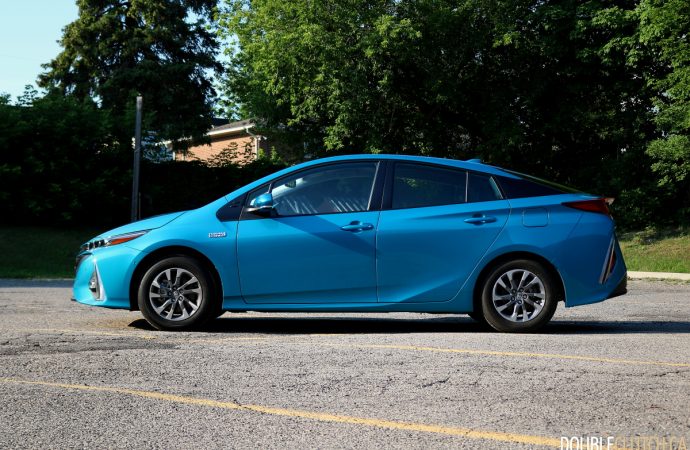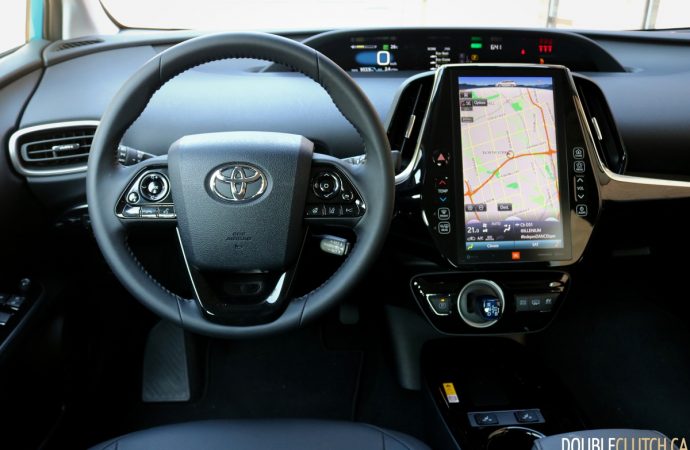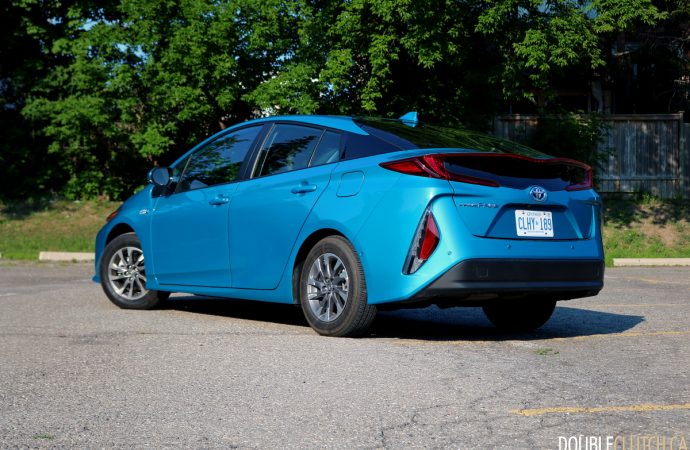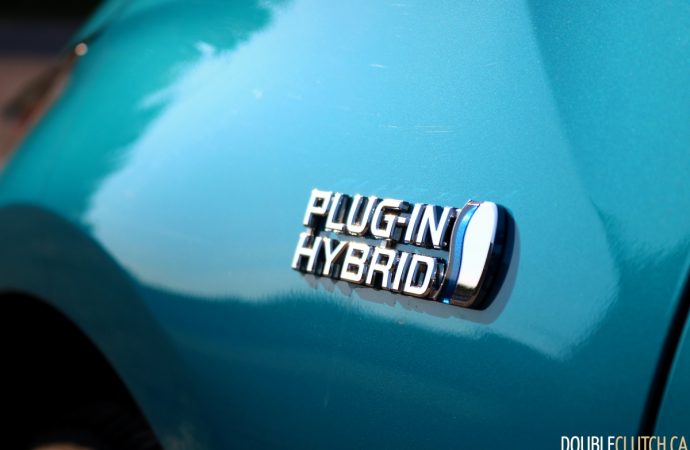Whelp, it’s official. The federal government has mandated that all new cars sold by 2035 must be zero-emission vehicles. Some people think that this is for the better and can’t wait for their next car to be all-electric. Some internal combustion enthusiasts will carry on by mixing sketchy homemade E85, pouring it into their well-preserved turbo builds and cranking the knobs clean off their boost controllers. Most people want to enjoy the benefits of an electric car but don’t feel comfortable jumping right into full EV life. Enter the 2022 Toyota Prius Prime; a futuristic car for the realities of today.
Looking at the Prius Prime, you almost can’t help but feel a bit cyberpunk. While still easily identifiable as a Prius, it looks both dramatic and different from every other car on the road. The generally hemispherical hood has a massive flat relief on it reminiscent of the bow of a yacht. The headlamps look like spider eyes with four distinct gemstone-like elements in each unit. The overall silhouette is dramatically teardropped in a bid to slice through the air as cleanly as possible. But by far and away, the coolest part of the Prius Prime’s design is the rear window. It goes convex, then concave, then convex to form a double-bubble shape unlike anything else on the road.
The interior of the Prius Prime blends modern tech with traditional Prius hallmarks. Well, I say modern tech, but the execution isn’t quite up to snuff. The dashboard on higher trims is absolutely dominated by an enormous 11.6-inch portrait-oriented touchscreen that’s surprisingly low-resolution and features disappointingly poor black levels for a modern infotainment display. Also disappointing is that the big screen isn’t paired with a volume knob, an omission that makes cranking up the tunes a bit cumbersome.
Thankfully, the JBL stereo fitted to our fully-loaded test car is absolutely thunderous. Sure, there’s no centre channel so staging isn’t the best and it’s nowhere close to reference-grade, but it exhibited balanced highs and put out more bass than the main stage at Glastonbury. Crank up the right track and every mirror on the car becomes purely theoretical. It’s as riotous as it is antisocial and I found it to be the most enjoyable factory stereo I’ve tried in a car costing less than $50,000.
Powering the Prius Prime is a 1.8-litre atkinson-cycle four-cylinder engine, two motor-generators and an 8.8 kWh lithium ion battery pack with a combined system output of 121 horsepower. While Toyota doesn’t quote a torque figure, when the battery is all charged up, torque feels like absolutely plenty. Ease off on the throttle on a full charge though, and drivers will find an all-electric cruising range of around 45 kilometres before the gasoline engine kicks in, a fantastic real-world result. Since the median commute distance in Canada is only 8.7 kilometres, many Prius Prime owners can go about their daily business without using a single drop of gasoline and when longer distance driving is required, the flexible PHEV powertrain provides excellent cruising range and efficiency.
In fact, I took it from Toronto to Kingston and back again, a distance of roughly 500 kilometres, without having to touch a charging cord. As of today, you can’t really do that with any electric car. Not in the real world with hills and rain and wipers and lights and air con and highway speeds and Bring Me The Horizon banging away on the stereo. During the whole week that I had the Prius Prime, I averaged 2.4 L/100km, an absolutely stellar number considering the road trip it went on. Perhaps even more phenomenal is that if I were only commuting, I’d have used absolutely no fuel at all.
Of course, driving in a fuel-saving manner is only one side of the Prius’ coin. We all know that there are actually two types of Prius driver. One of them accelerates gently, uses the additional regenerative braking of B mode and doesn’t break 100 km/h in order to wring out every last MPG. The second can be found coming around the outside of the 401 to 427 transfer ramp at Mach Jesus because they know that no matter how they drive, they’ll still get decent mileage. Toyota seems to know this, which is why this plug-in variant of the fourth-generation car has some serious engineering underneath.
It all starts with the hip point, the distance between the driver’s hips and the ground that sets the tone for the entire driving experience. SUVs have a high hip point for a commanding feel while sports cars set the driver right on the tarmac to make them feel one with the road. In the Prius Prime, the hip point is surprisingly low. This gives the driver a great feel of the road despite the Prius Prime’s light, numb steering. Another genuine surprise is how playful the Prius Prime’s chassis is. It rotates phenomenally and joyously under trail-braking, breaks away at the limits of traction in a very progressive manner and is a genuine joy to flog about. Genuine hot-hatch chassis tuning in a sensible commuter car. What’s more, ride quality is excellent, soaking up freeway imperfections and pockmarked city streets with ease.
Finally, we get to price, a spot where the Prius Prime has an ace up its sleeve. It starts at $33,550 before any government incentives. That’s an incredible price for such a capable, practical plug-in hybrid. Our fully-loaded Upgrade with Technology Package model retails for $38,700 before incentives which is still a great deal for a well-equipped plug-in hybrid and cheaper than a comparably-equipped Camry Hybrid XLE. Factor in the federal government’s $2,500 PHEV incentive and the Prius Prime’s pricing gets even sweeter.
North Americans are funny. Compared to Europeans, we buy cars on fringe cases. Our desire to be prepared for the one time we might drive across the continent or the one time we might need to tow a beached whale back into the ocean drives our car purchasing decisions. It’s why our most popular vehicle is the Ford F-Series pickup truck and why electric cars haven’t caught on as quickly as the industry had hoped. The 2022 Toyota Prius Prime is flexible enough for our fringe cases and yet green enough that many owners won’t use any gasoline at all during the daily commute. It’s as practical as it is well-priced and genuinely deserves a spot on consumers’ shortlists, even if they’ve never thought about buying a Prius before.







